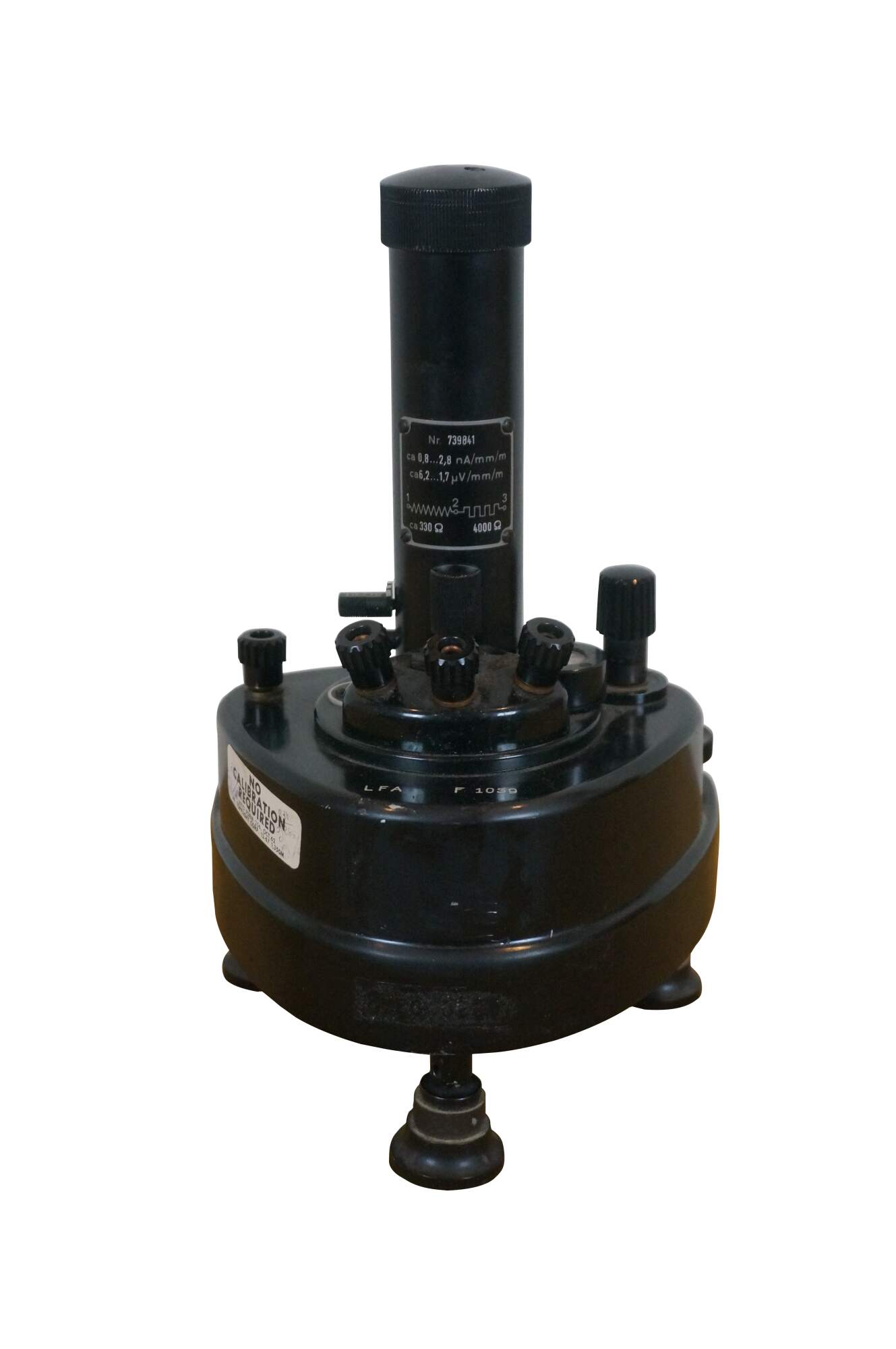
Shipping:
Free Shipping Included
Delivery:
Estimated 2-15 Business Days
Payments:
Credit Card, Check, Cash, PayPal, Apple Pay, Venmo
Returns:
30 Days 100% Money Back Guarantee, Buyer Pays Return Shipping
Description
Circa mid 20th century German Siemens & Halske Dual Coil Super Galvanometer / Mirror Galvanometer, Nr. 739841.
"A galvanometer is an electromechanical measuring instrument for electric current. Early galvanometers were uncalibrated, but improved versions, called ammeters, were calibrated and could measure the flow of current more precisely. Galvanometers work by deflecting a pointer in response to an electric current flowing through a coil in a constant magnetic field." (Source: Wikipedia)
"Siemens & Halske AG (or Siemens-Halske) was a German electrical engineering company that later became part of Siemens. It was founded on 12 October 1847 as Telegraphen-Bauanstalt von Siemens & Halske by Werner von Siemens and Johann Georg Halske. The company, located in Berlin-Kreuzberg, specialised in manufacturing electrical telegraphs according to Charles Wheatstone's patent of 1837. In 1848, the company constructed one of the first European telegraph lines from Berlin to Frankfurt am Main. In 1881, Siemens & Halske built the Gross-Lichterfelde Tramway, the world's first electric streetcar line, in the southwestern Lichterfelde suburb of Berlin, followed by the Mödling and Hinterbrühl Tram near Vienna, the first electrical interurban tram in Austria-Hungary. 1882 saw the opening of the experimental "Elektromote" track, an early trolleybus concept in the Berlin suburb of Halensee. The rising popularity of telegraphs and electrical tramways, as well as in generators and electric motors, ensured steady growth for Siemens & Halske. Werner von Siemens retired in 1890, while Johann Georg Halske had already left the company in 1867. Werner von Siemens' brother Karl Heinrich, together with Werner's sons Arnold and Georg Wilhelm, grew the firm and erected new Siemens & Halske premises along the banks of the western Spree river, in the Berlin suburb of Charlottenburg, in 1897. The firm's vast new site continued to grow, and from 1899 onwards it was known as Siemensstadt.Siemens & Halske quickly expanded with representatives in Great Britain and Russia as well as its own cable-manufacturing plants at Woolwich and Saint Petersburg. The company's rise was supported by Werner von Siemens' patent of the electric generator (dynamo) in 1867. When Siemens & Halske merged parts of its activities with Schuckert & Co., Nuremberg in 1903 to become Siemens-Schuckert, Siemens & Halske AG specialized in communications engineering. During World War I, rotary engines of advanced and unusual design were produced under the Siemens-Halske brand, like the Siemens-Halske Sh.I and Sh.III. Siemens & Halske also produced large numbers of MG08/15 machineguns deployed for service of the Kaiser Imperial forces in World War I. Later, Siemens established several company subsidiaries for which the Siemens & Halske AG functioned as a holding company. During the Second World War, Siemens & Halske employed slave labour from concentration camps. Among other things, they produced field telephones of the type "Feldfernsprecher 33"." (Source: Wikipedia)
Condition
Good Overall - Gentle wear
Dimensions
6.5" x 6" x 9.75" (Width x Depth x Height)